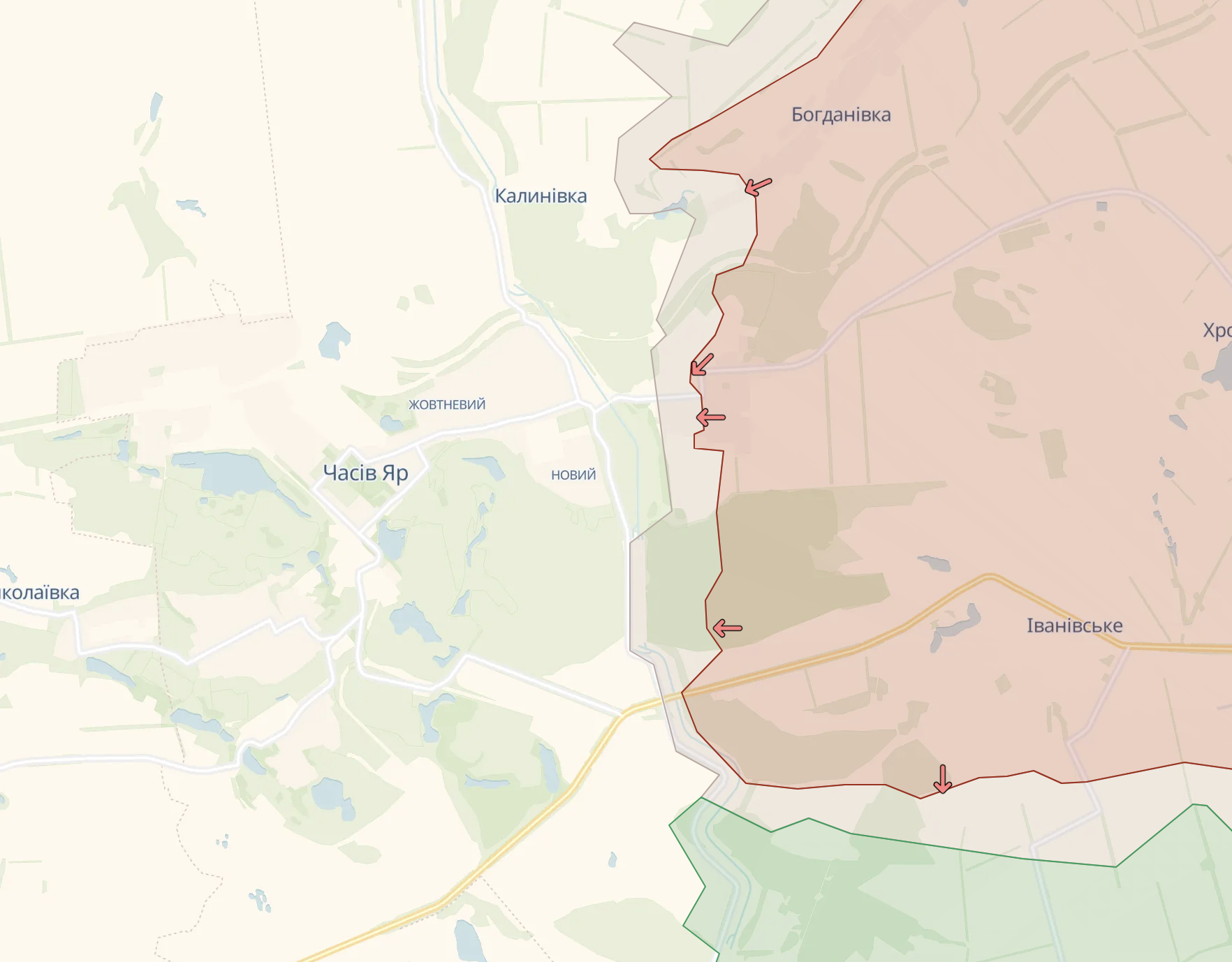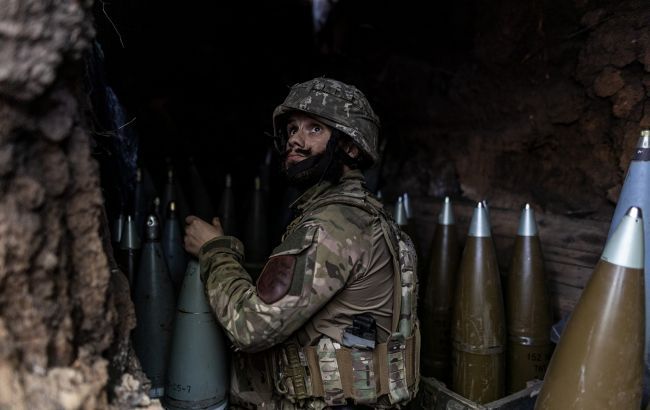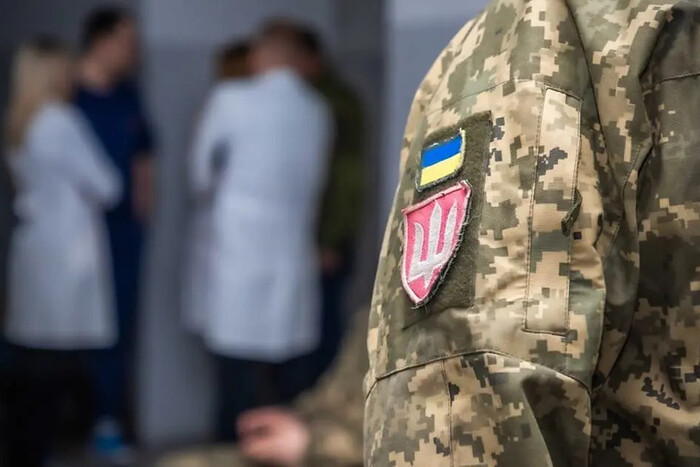Following the halted offensive by Russian forces in Kharkiv Oblast, messages about the so-called «threat» to Sumy Oblast have been actively spreading, while statements about «increased tensions» on the border continue to come from Belarus. Meanwhile, the enemy continues to increase its pressure in Donetsk Oblast.
Is There a Threat of an Enemy Offensive in Sumy Oblast?
Rumors about a possible offensive in Sumy Oblast started circulating simultaneously with increased activity in the northern Kharkiv direction, where Russian forces did not achieve the desired results. Currently, the State Border Guard Service of Ukraine (SBGS) assures that Russian forces lack the necessary strength and resources to launch an offensive in Sumy Oblast. A source in the General Staff of Ukraine, speaking to RBC-Ukraine, confirmed that Russia is not forming offensive groups near Sumy at the moment.
However, SBGS spokesperson Andriy Demchenko noted, «We must be prepared for any situation as long as Ukraine has a neighbor like Russia.» He also mentioned that there has been a recent decrease in the activity of Russian sabotage and reconnaissance groups (DRGs).

«Recently, we have seen some decrease in the activity of enemy sabotage and reconnaissance groups, but this activity has not disappeared completely. The threat of enemy sabotage operations remains,» Demchenko stated during a broadcast of the telethon.
Despite this, border guards do not rule out the possibility that Russia could expand the zone of active combat. The American Institute for the Study of War (ISW), analyzing the situation, stated that it is unclear whether the Russians will launch a new offensive. However, if such a scenario unfolds, analysts believe that any offensive actions by the occupiers are aimed at pinning down and diverting Ukrainian forces from other critical sectors of the front line.
Military expert Pavlo Narozhny believes that the occupying forces currently lack the resources to launch an offensive in Sumy Oblast. Additionally, the Russians have already stretched their front line into Kharkiv Oblast, where they are struggling.
«They are making attempts to advance there, but it looks more like they are trying to repel Ukrainian counterattacks. That’s the maximum they are capable of at the moment. They are in an interesting situation where they cannot advance in Kharkiv Oblast, nor can they retreat because there are no prepared positions to fall back to. This puts them in a ‘zugzwang’ situation. They have a battalion surrounded in the Aggregat Plant, which they cannot afford to abandon,» Narozhny explained.
He added that Russia would need tens of thousands of soldiers for an offensive, as in Kharkiv Oblast, where they assembled a contingent of approximately 90,000 troops.
«In Sumy Oblast, they would need at least 60-70 thousand troops, which they simply don’t have. Currently, they are mobilizing 30-32 thousand per month, just enough to cover their losses in Ukraine,» Narozhny said.
Statements from Belarus about «Increased Tensions»
Recently, the regime of dictator Alexander Lukashenko has been making statements about «increased tensions» on the border with Ukraine. Belarusian generals are again claiming a «buildup of forces on the border from the Ukrainian side,» adding nuclear threats to previous warnings.
For example, Lukashenko recently stated that Belarusian «border guards have been put on heightened alert,» Special Operations Forces have been deployed, and the Air Force and Air Defense units have been brought to «high combat readiness.» Meanwhile, Ukrainian border guards describe Belarusian statements as mere manipulation and information tactics aimed at shifting responsibility onto Ukraine.
«The direction of Belarus will remain a threat to us as long as Belarus remains within Russia’s sphere of influence. We will continue to strengthen our defensive capabilities,» Demchenko said.
Moreover, there are no prerequisites for the direct involvement of the Belarusian army in the war. Expert Pavlo Narozhny noted that Belarus lacks the resources, motivation, and capability.
«Who will fight from Belarus? The Belarusian army? They have given all their weapons to Russia, have only 3-4 battalions, and their motivation is extremely low. What’s the point of fighting for them? All they can do are psychological operations, causing tension or sending migrants to Europe. That’s the extent of their capabilities,» Narozhny stated.

The «Hot» East and the Possibility of Russia Expanding the Front Line
According to Commander-in-Chief of the Armed Forces of Ukraine Oleksandr Syrskyi, intense combat operations of varying intensity continue along the entire front line, with the situation particularly challenging in the Pokrovske direction. In addition, the Toretsk direction has become increasingly active, where Ukrainian forces are significantly reducing the number of attacking enemy forces daily. The intensity of combat has decreased in other directions, but the active front line has increased.
In an interview, expert Pavlo Narozhny explained that it is unlikely that the Russians will manage to open new fronts, focusing instead on improving their tactical positions.
«The primary efforts will be in the Pokrovske and Toretsk directions, as well as Chasiv Yar, where they will attempt to flank instead of frontal assaults. There might also be some attempts in the Kupiansk direction. But currently, Toretsk and Pokrovske are their main offensive directions. This has been the focus since the beginning of their summer campaign,» Narozhny explained.
He added that the occupiers’ objective is to reach the borders of Donetsk Oblast and capture the Kramatorsk-Sloviansk agglomeration. Despite some tactical successes in the Pokrovske direction, where they have advanced to Ocheretyne, the Ukrainian army is counterattacking and maintaining relative success.
«The Russian summer campaign seems to be bogged down without significant success, but they are suffering huge losses, especially in the Kharkiv direction. It’s a ‘black hole’ for them, particularly around Vovchansk, where they send soldiers only to be destroyed. Ukrainian artillery has free rein there, targeting their rear positions in Belgorod,» the expert concluded.
Sources for this material include reports from ISW analysts, data from the Center for Strategic Communications and Information Security, statements from SBGS spokesperson Andriy Demchenko, Commander-in-Chief Oleksandr Syrskyi, and an exclusive comment from military expert Pavlo Narozhny.





